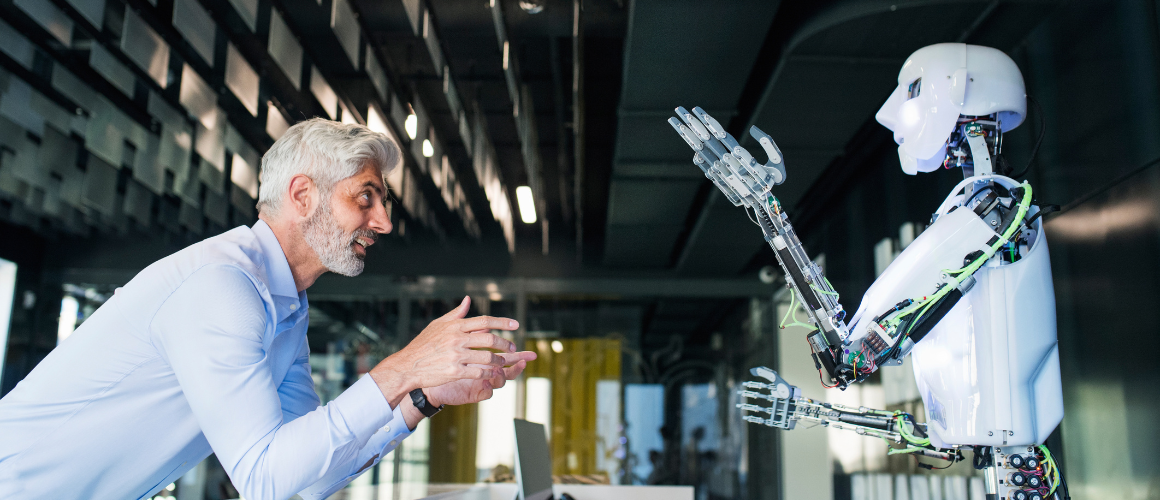
How Robotics is Redefining the Construction Industry
The construction industry stands at a pivotal juncture, marked by a significant shift towards digital transformation. This industry, historically perceived as slow to embrace technological change, is now witnessing a paradigm shift. Advanced technologies, especially robotics, are not just knocking at its door but are already redesigning the construction landscape.
At its core, the construction sector has always grappled with challenges such as project delays, budget overruns, and safety concerns. However, recent years have brought these issues into sharper focus, compelling the industry to seek innovative solutions. This search for efficiency and effectiveness has led to the exploration and integration of robotics into various construction processes.
The integration of robotics in construction is a reflection of a broader digital transformation that is sweeping across industries globally. In construction, this transformation goes beyond merely adopting new tools; it's about rethinking the entire approach to building. From automated bricklaying to drones for site surveying, robotics offers new avenues to address age-old problems.
This technological revolution is about more than just overcoming current challenges. It's about future-proofing the industry, making it more resilient, efficient, and sustainable. As we delve deeper, we will explore how robotics is not just a temporary fix but a long-term solution to both present and persistent challenges in construction.
The journey of integrating robotics in construction is akin to opening a new chapter in an old book. It's about retaining the essence of building and construction while infusing it with new efficiencies and possibilities by robotic technology. As we turn this page, let's explore how this change is taking shape and revolutionizing the industry.

Can the construction industry thrive amidst labour shortages and increasing safety regulations? This question resonates deeply within the corridors of construction companies worldwide. It reflects their dual challenge: maintaining efficiency and growth while grappling with workforce constraints and stringent safety mandates. These challenges must be addressed in an industry where the margin for error is minimal and the stakes are high.
Labour shortages have been a persistent thorn in the construction industry. Finding skilled labour affects the pace of work and the quality and safety of construction projects. It's a problem compounded by an ageing workforce and a younger generation less inclined towards careers in construction. This shortage isn't just a temporary hiccup; it's a glaring issue that demands a sustainable solution.
On the other hand, safety regulations, although essential, add another layer of complexity. These regulations are crucial for safeguarding workers but require companies to allocate additional resources and time for compliance. In an industry often racing against tight deadlines and tighter budgets, these safety requirements, while necessary, can be a source of significant pressure.
These twin challenges of labour shortages and safety regulations create a unique dilemma. How can construction companies maintain their growth trajectory and uphold safety standards without the requisite human workforce? The answer may lie in an unexpected ally: robotics. The following sections of this blog will delve into how robotic technology is not just a futuristic concept but a practical solution to these current and pressing challenges in the construction industry.
The gradual embrace of robotics in construction has been akin to watching a slow but steady tide change. Initial scepticism and hesitation have given way to curiosity and acceptance as the tangible benefits of robotic technology become increasingly evident.
A prime example of this shift is the integration of 'Spot', the robot dog, into construction workflows. Initially viewed as a novelty, Spot's ability for 3D scanning and data collection quickly proved invaluable. On a construction site, Spot can navigate challenging terrains, collect precise data, and perform tasks repetitively with unmatched accuracy. This saves time, reduces the risk of human error, and increases overall efficiency.
The story of Spot is just one among many. Drones, for instance, are increasingly used for aerial site surveys, providing a bird's eye view that was previously impossible or costly to achieve. Automated bricklaying robots, once a concept, are now a reality, laying bricks with precision and speed unmatched by human hands. These examples illustrate a broader trend: the construction industry is not just adopting robotics but is being transformed by it.
This transformation, however, has its challenges. The initial scepticism about robotics in construction was rooted in legitimate concerns:
- The fear of job displacement
- The high cost of technology
- Doubts about the practical application
Yet, as the industry grapples with these concerns, it's becoming clear that robotics is not replacing humans but augmenting human capabilities. By taking over repetitive, dangerous, or exact tasks, robots allow human workers to focus on more complex, creative, and less hazardous aspects of construction.
Moreover, while significant, the cost of robotic technology is an investment into future savings and efficiencies. As these technologies become more mainstream, their price will likely decrease, making them more accessible to a broader range of construction projects.
Integrating robotics in construction is not a sudden revolution but a progressive evolution. It's a journey marked by learning, adaptation, and a gradual shift in mindset. As we delve deeper into this journey, we'll see how robotics solves present challenges and paves the way for a future where construction is safer, more efficient, and more sustainable.

Implementing robotic technology in construction transcends being a mere solution to current challenges; it represents a significant leap towards industry evolution. Robotics is addressing the immediate issues of labour shortages and safety regulations and laying the groundwork for a more efficient, innovative, and competitive future in construction.
Firstly, robotic technology is critical in tackling the labour shortage problem. By automating repetitive and labour-intensive tasks, robotics frees up the existing workforce to focus on more skilled and vital aspects of construction. This increases productivity and opens avenues for upskilling workers, ensuring that the workforce evolves alongside the technology. For instance, an operator previously tasked with manual labour could transition to managing and maintaining robotic equipment, elevating their skill set and job value.
In terms of safety, robots are proving to be invaluable allies. By performing high-risk tasks, such as working at heights or handling hazardous materials, robots significantly reduce the risk of workplace accidents. This ensures compliance with safety regulations and fosters a safer work environment, crucial for worker morale and retention.
Moreover, the precision and efficiency of robotics lead to higher-quality construction with fewer errors and less waste. This is not just beneficial from an environmental standpoint but also from a financial perspective, as it reduces the cost of materials and rectifications. In a market with tight margins, these savings can be the difference between profitability and loss.
The competitive edge gained through robotics cannot be overstated. Companies that embrace this technology position themselves as forward-thinking and innovative, attracting new clients and talent. In a world where technological prowess is increasingly equated with industry leadership, the early adopters of robotics in construction will likely become tomorrow's trendsetters.

In conclusion, integrating robotics in the construction industry is a multifaceted solution with far-reaching implications. It's a step towards solving existing problems and creating a more resilient, efficient, and future-ready industry. As we witness this technological integration, one thing becomes clear: robotics in construction is not just about building structures; it's about building a new future for the entire industry.
As we reach the end of our exploration into the transformative impact of robotics in the construction industry, it's clear that we are standing at the brink of a new era. This journey from scepticism to the integration of robotics has not just been about adopting new technologies; it's been about reimagining what construction can be in the 21st century.
Once a figment of science fiction, robotics is a tangible and vital component of modern construction sites. The benefits of robotics are multifaceted, from enhancing safety to addressing labour shortages, increasing efficiency, and reducing environmental impact. As we've seen, this technology is not replacing human workers. Still, it empowers them, creating opportunities for upskilling and paving the way for more innovative and fulfilling roles in the industry.
The rise of robotics in construction is more than a technological trend; it's a vital step towards a more thoughtful, safer, and sustainable future. As this technology continues to evolve and become more accessible, it will undoubtedly redefine what we think when discussing building and construction. The future of construction is here, and it is robotic.